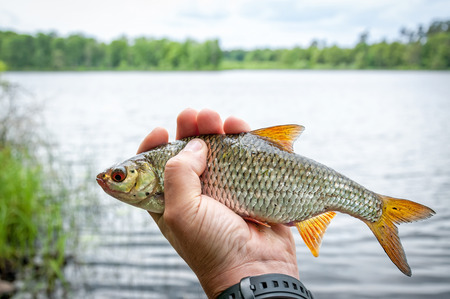1. Understanding the British Fly Tying Scene
If you want your fly tying content to truly resonate with a British audience, it’s essential to immerse yourself in the unique characteristics of the UK fly tying scene. British fly tying is steeped in tradition, with patterns like the North Country Spider, the classic Greenwell’s Glory, and the intricate salmon flies of Scotland all holding a special place in anglers’ hearts. Many local tyers pay homage to historical methods, often using natural materials and favouring understated elegance over flashy aesthetics. By understanding these traditions, you can ensure your photos and videos reflect authenticity—whether you’re highlighting the delicate craftsmanship of a Yorkshire wet fly or capturing the timeless appeal of a chalkstream dry pattern. Showcasing your knowledge of British rivers, native species, and iconic regional styles will help your content stand out as both genuine and respectful of local heritage. Ultimately, taking the time to learn about the British fly tying tradition not only enhances your storytelling but also builds trust with viewers who value authenticity and cultural appreciation.
2. Choosing the Right Equipment for Crisp Visuals
Creating captivating content around British fly tying is all about capturing the subtle intricacies that set your creations apart. To do this in a home environment, its vital to choose equipment that brings out the details British anglers value—like the precise hackle alignment or delicate thread wraps. Below, youll find practical advice and a handy table to help you select cameras, lighting, and backdrops tailored for home use.
Cameras: Matching Detail with Practicality
For most creators, a mirrorless camera or a high-end smartphone will do the trick. Mirrorless cameras (such as the Canon EOS M50 or Sony Alpha series) offer interchangeable lenses, letting you get up close for macro shots of your flies. Meanwhile, newer smartphones like the iPhone 14 or Samsung S23 have impressive macro capabilities and can be easier to position in tight spaces at home. Remember, it’s not just about resolution; look for features like manual focus and RAW image support to give you more control over your final shot.
Lighting: Enhancing Texture and Colour
British light can be famously fickle, so supplementing natural daylight with consistent artificial lighting is key. Softbox lights or LED ring lights are ideal for reducing harsh shadows and bringing out the natural hues of feathers and dubbing. Consider using daylight-balanced bulbs (around 5600K) to mimic soft British daylight—a detail many local anglers will appreciate when viewing your work online.
Backdrops: Setting the Scene
Your choice of backdrop can subtly reinforce your British identity while ensuring your flies stand out. A simple matte grey or moss green background reflects classic UK riverbanks and prevents distraction from your subject. Avoid glossy surfaces that may create unwanted reflections or colour casts on your flies.
Recommended Equipment for Home Fly Tying Content Creation
| Equipment Type | Recommended Options | Key Benefits | UK-Specific Tips |
|---|---|---|---|
| Camera | Mirrorless (Canon EOS M50), Smartphone (iPhone 14) | High detail, flexible setup | Look for macro capability; tripod mount helps in small spaces |
| Lighting | LED Ring Light, Softbox with 5600K bulbs | Even light, true colours | Mimics overcast UK daylight; easy to set up in lounge or shed |
| Backdrop | Matte grey/moss green card or fabric | No glare, highlights fly details | Nods to British riverscapes; fits traditional aesthetic |
Pro Tip:
If filming in a typical British home where space is limited, use clamp lights or compact tripods. These make it easier to adapt your setup without rearranging the entire room.

3. Showcasing Materials: Highlighting Colours and Textures
Capturing the True Character of British Fly Tying Materials
When filming or photographing your fly tying creations, one of the most important aspects is to faithfully represent the natural hues and intricate textures of traditional British materials—think pheasant tail, mallard, peacock herl, and hackle. These materials are often prized for their subtlety rather than showiness, so your content should focus on clarity and authenticity to do them justice.
Lighting Techniques for Authentic Colour Representation
The famously overcast British weather can be both a challenge and an advantage. Soft daylight from a cloudy sky is ideal for reducing harsh shadows and preventing colour distortion. If you’re filming indoors, position your workspace close to a north-facing window for consistent, diffused light that mirrors outdoor conditions. For evening sessions or gloomy days, use daylight-balanced LED panels with adjustable brightness, angling them at 45 degrees to your tying desk to minimise glare on shiny threads or tinsel.
Tips for Emphasising Texture and Detail
- Use macro lenses or a phone camera’s close-up mode to capture fine details such as feather barbs or dubbing fibres.
- Set your aperture (f-stop) higher (e.g., f/8–f/11) to ensure more of your fly is in sharp focus—this is especially helpful when showcasing layered patterns like the classic Greenwell’s Glory.
- Avoid direct flash, which can flatten textures and create unnatural highlights. Instead, bounce light off a white card or wall to create soft fill light that reveals surface detail.
Show Off Subtle British Colours
Classic British flies favour earthy greens, browns, olives, and muted golds. To help these come through in photos and video:
- Set your white balance manually if possible; auto settings may wash out subtle tones.
- Consider placing a neutral grey card in the frame before shooting to calibrate colours during editing.
By mastering these techniques, you’ll ensure your audience appreciates the understated beauty and craftsmanship of authentic British fly tying—whatever the weather outside your window.
Filming Step-by-Step Tutorials with Clarity
Creating step-by-step video tutorials for British fly tying requires a clear approach that speaks to your UK audience. To start, break down the process of tying classic British flies like the Pheasant Tail Nymph, Black Pennell, or Alexandra into manageable stages. Use straightforward English and common UK angling terms—avoid jargon where possible, unless its widely recognised in the British fly fishing community. This not only makes your content more accessible but also helps beginners feel welcome.
Breaking Down the Fly Tying Process
For each fly you demonstrate, structure your video around these core steps:
| Stage | British Example Term | Explanation |
|---|---|---|
| 1. Materials Prep | “Sorting your bits and bobs” | Lay out all feathers, threads, hooks, and tools. Mention local suppliers or favourite high street shops if relevant. |
| 2. Starting the Thread | “Whipping on at the eye” | Show how to secure the thread at the hook’s eye using a whip finish tool—a staple in UK fly tying kits. |
| 3. Building the Body | “Dubbing with hare’s ear” or “winding tinsel” | Use simple language as you add dubbing or wrap materials, and clarify terms like “sparse” or “bushy” as they relate to traditional British patterns. |
| 4. Adding Hackle or Wings | “Cocking it up” (for hackle) or “setting the slips” | Demonstrate common British techniques for tying in hackles or wings—use close-ups for detail and narrate every move. |
| 5. Finishing Off | “Whip finishing at the head” | Show the final securing knots and trimming, highlighting any UK-specific habits like varnishing with Sally Hansen’s Hard as Nails. |
Tips for Filming with Clarity
- Camera Angles: Use overhead shots to show hand movements clearly—this is especially helpful for intricate patterns like the March Brown.
- Pacing: Don’t rush; give viewers time to see each step. Consider adding slow-motion sections for tricky bits such as tying in delicate mallard wings.
- Language: Explain regional terms (e.g., “loch style” flies vs. “river dries”) so anglers from Cornwall to Scotland can follow along.
- Subtitles: Add clear British English captions to help those who prefer reading along or have hearing difficulties.
- Cultural Touches: Mention local waters where the fly excels (“great for chalk streams” or “a must-have on Scottish lochs”). It adds value and connects with your audience.
The Importance of Being Approachable
Your goal is to make every viewer—whether a seasoned Tyne trout angler or someone just starting out with their first vice—feel included. By using clear step-by-step explanations, familiar UK references, and plain English, you help demystify fly tying while celebrating Britain’s rich angling heritage. This approach not only builds trust but also encourages engagement and sharing within the vibrant British fly fishing community.
5. Editing for a British Auditory and Visual Style
Once you have captured your footage and photos of your fly tying creations, the editing process is where you can truly infuse your content with British character. To resonate with a UK audience, consider incorporating British voiceovers that use familiar regional accents or colloquialisms. This immediately makes your content feel more local and relatable to viewers from different parts of the country.
Choosing the right background music is equally important. Opt for local British artists or traditional tunes that evoke a sense of place, such as gentle folk melodies or subtle acoustic guitar pieces. Avoid overly dramatic or generic stock music that might distract from the craftsmanship you are showcasing.
When it comes to visual pacing, remember that UK audiences often appreciate a measured, thoughtful approach rather than rapid-fire edits. Allow shots to linger on important details—such as intricate thread work or feather selection—to give viewers time to appreciate the skill involved. Use transitions sparingly and keep graphics understated, focusing instead on clarity and authenticity.
Finally, consider adding small touches like British spellings in on-screen text and references to local fishing spots or traditions. These details help ground your content in its cultural context and make it feel genuinely homegrown, building stronger connections with your audience.
6. Engaging with the UK Fly Fishing Community
Tips for Sharing Your Work on British Social Platforms
Once you’ve captured stunning photos and videos of your fly tying creations, sharing them effectively is key to building an engaged audience within the UK fly fishing scene. Start by understanding the unique tone and preferences of British anglers online. Platforms like Instagram and Facebook are popular, but also consider joining UK-specific groups such as “Fly Dresser’s Guild” or “UK Fly Fishing Forums.” Tailor your captions with British English spelling and use colloquial phrases like “tight lines” or “on the water” to resonate more naturally with a local audience.
Participating in Forums and Online Communities
British fly fishing forums, such as Salmon & Trout Association’s discussion boards or The Fly Dressers’ Guild’s online spaces, are invaluable for sharing your work and receiving constructive feedback. When posting your creations, include details about the materials used, tips on local patterns, or insights into regional rivers and lochs where your flies might perform best. Engage thoughtfully with comments—politeness and genuine curiosity go a long way in these close-knit communities.
Collaborating with Local Groups and Events
Don’t overlook the impact of local angling clubs and events throughout England, Scotland, and Wales. Many clubs welcome guest speakers or feature community showcases on their websites and newsletters. Offer to give a short online demo or write a guest post featuring your fly tying techniques. Attending or participating in regional fly tying competitions can also raise your profile among dedicated enthusiasts.
Building Trust and Growing Your Following
The key to growing a loyal following within the UK fly fishing community lies in authenticity and consistency. Share both your successes and learning moments—British anglers appreciate humility and a willingness to improve. Use hashtags relevant to the UK scene (#UKFlyFishing, #BritishFlyTying) to increase discoverability, but avoid over-tagging. Regularly update your followers with new patterns, tips from your own experiences on British waters, and interact with others’ content to foster genuine relationships.
By immersing yourself in British social platforms, forums, and local groups, you’ll not only showcase your creativity but also become an active participant in preserving and evolving the rich tradition of UK fly fishing.


